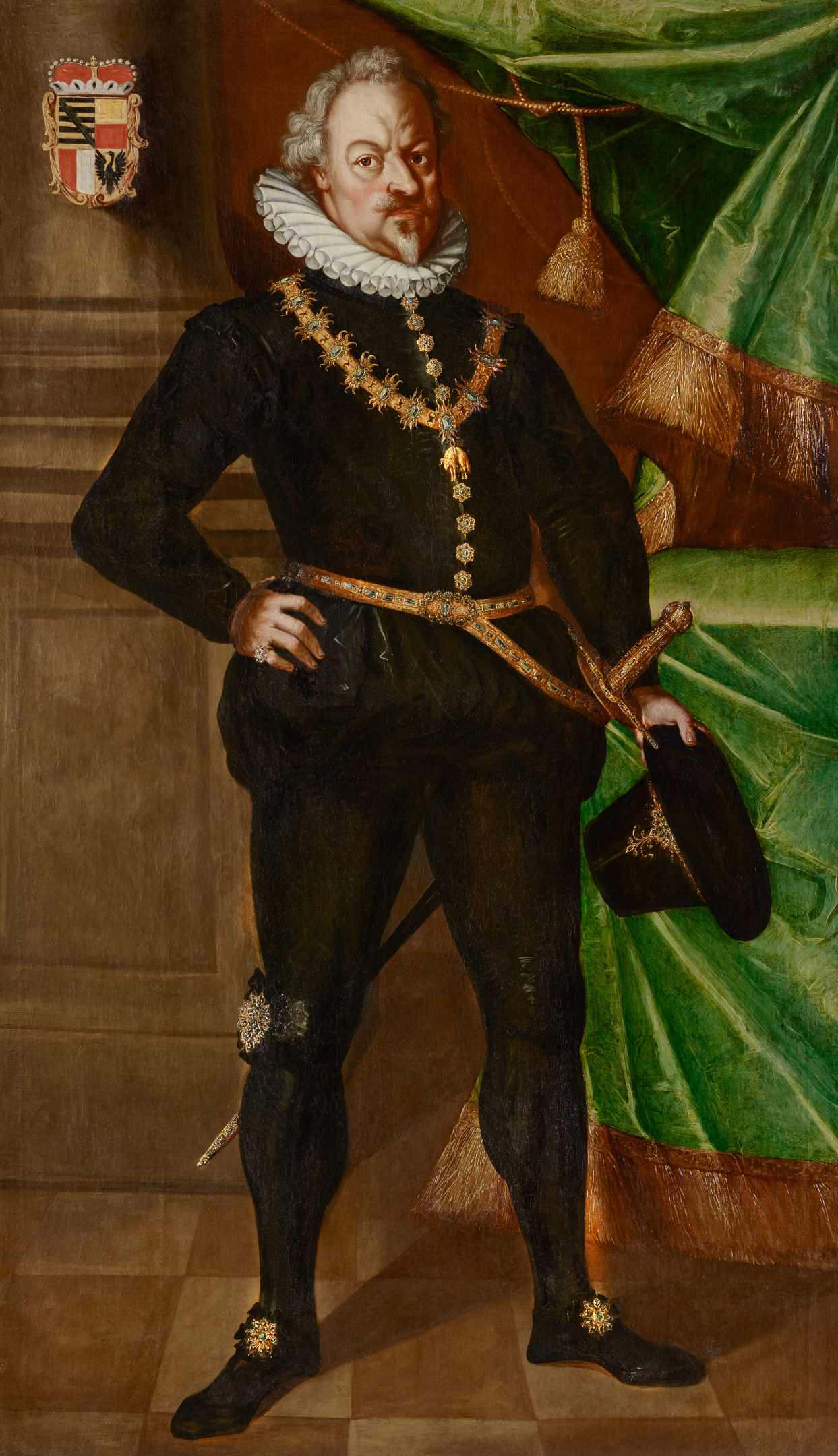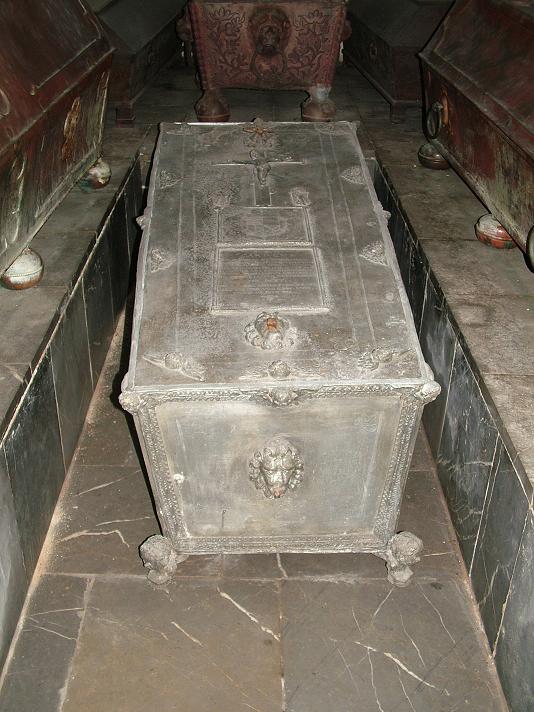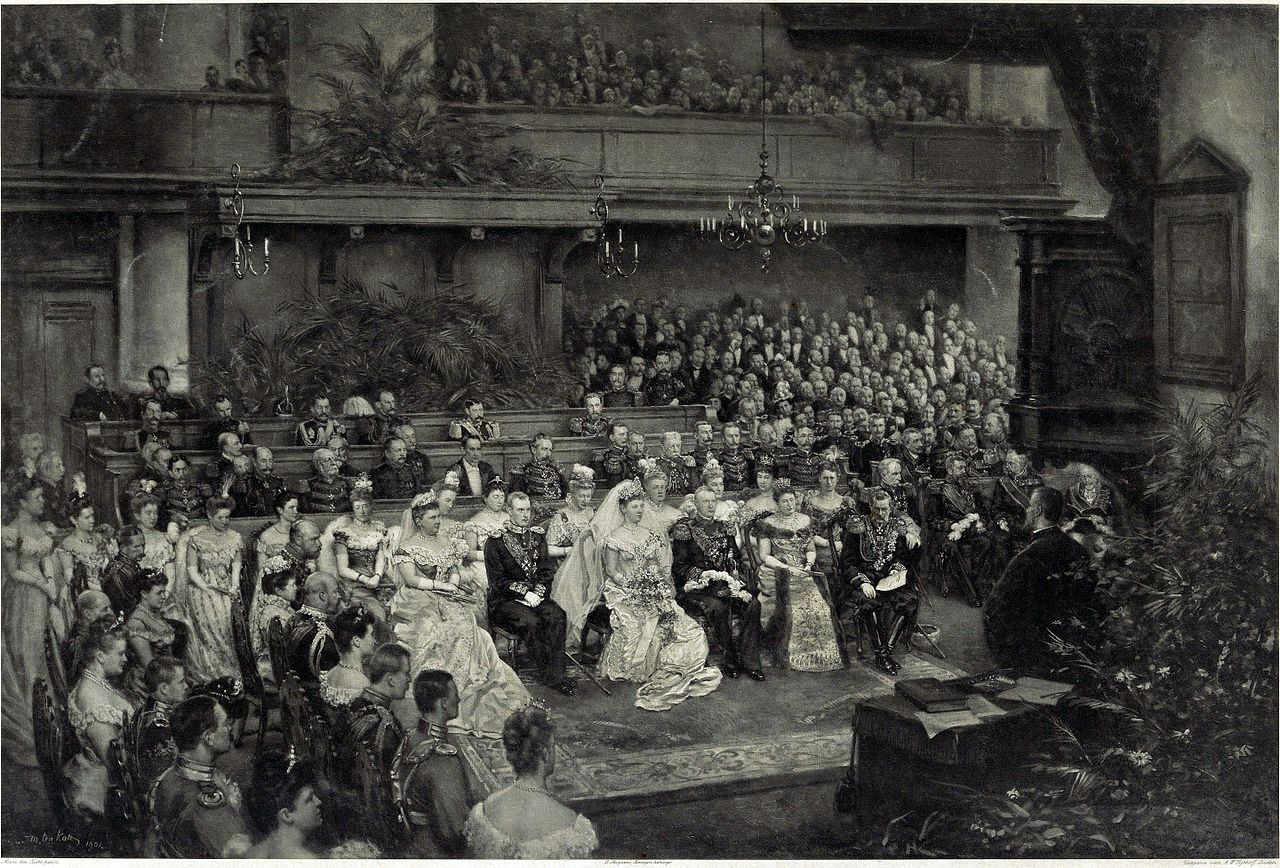by Susan Flantzer
© Unofficial Royalty 2021

Nidaros Cathedral; Credit – By Molde20 – Own work, CC BY-SA 3.0, https://commons.wikimedia.org/w/index.php?curid=18361136
Originally a Roman Catholic church, Nidaros Cathedral is a church of the Church of Norway, a Lutheran denomination, in Trondheim, Norway. Trondheim’s original name was Nidaros and was founded in 997 as a trading post. During the Viking Age, it was the capital of Norway. Nidaros Cathedral was built over the burial site of King Olaf II of Norway (circa 995 – 1030), the patron saint of Norway. The cathedral was the site of coronations and now is the site of the consecration of Norwegian monarchs.
King Olaf II was killed at the Battle of Stiklestad in 1030. A year later, he was given the title Rex Perpetuus Norvegiae (Perpetual King of Norway) and was canonized a saint at Nidaros (Trondheim) by Bishop Grimketel, an English missionary who played a role in the conversion of Norway to Christianity. Olaf II’s sainthood encouraged the adoption of Christianity by Scandinavia’s Vikings/Norsemen. Pope Alexander III confirmed Olaf’s local canonization in 1164.
In the 1030s, a small wooden church was built over the burial site of Saint Olaf II. After a few years, it was replaced by a long stone church. The Romanesque and Gothic church we see today was built over a 230-year period, from 1070 to 1300. Nidaros Cathedral was dedicated to the Holy Trinity and consecrated in 1300. It remained a Roman Catholic church until 1537, during the Protestant Reformation.
Nidaros Cathedral had several fires – in 1328, 1432, 1451, and 1531 – which led to repairs and occasional new construction. The church also burned in 1708, when the entire cathedral burned except for the stone walls, and again in 1719 after being hit by lightning. Major rebuilding and restoration of Nidaros Cathedral started in 1869. It was officially completed in 2001 but the maintenance of the cathedral is an ongoing process with about 30 people continuously working on various projects.
The reconstruction of the west front of Nidaros Cathedral, the cathedral’s main façade. caused the most debate. The west front was among the most deteriorated parts of the church. Further complicating the situation was the fact that the west front was the most complex, least well documented, and most difficult to reconstruct. The oldest known depiction of the west front is an engraving by J.M. Maschius from 1661 showing two whole floors and parts of the third floor. A written source document says that Nidaros Cathedral had a rose window, a circular window found in Gothic cathedrals and churches

The reconstruction of the west front of Nidaros Cathedral; Credit – By H.-N. Meiforth, CC BY 3.0, https://commons.wikimedia.org/w/index.php?curid=46715064
Because of the serious damage to the west front, many reconstruction professionals opposed any attempt to restore it without major reconstruction, and so it was decided to completely reconstruct the west front, a project that lasted from 1905 to 1983. The new west front has 76 sculptures but only five of them are preserved from the Middle Ages. During the restoration, sculptures had to be provided to fill three levels of the west front. The sculptures include saints with connections to Norway, apostles, bishops, and Biblical patriarchs. See Wikipedia: Nidaros Cathedral West Front Sculptures.

The rose window on the west front viewed from the inside; Credit – https://www.therosewindow.com/TheRoseWindow2/Trondheim.htm
The rose window on the west front was a gift from the women of Norway to commemorate the 900th anniversary of the death of King Olaf II in 1930. The women raised the funds by selling their crafts. Gabriel Kielland, a Norwegian painter, architect, and designer designed the rose window which was completed in 1930. The window depicts the Last Judgement.
*******************
Coronations

King Haakon VII and Queen Maud seated on their thrones during their coronation in 1906; Credit – Wikipedia
Coronations took place in Norway between 1164, when the first coronation took place, and 1906 when the last coronation took place. The early coronations were held at Christ Church (Old Cathedral) in Bergen, Norway and then several coronations took place in Oslo. In 1397, the Kalmar Union united Norway, Sweden, and Denmark under one king. Until the Kalmar Union was dissolved in 1523, the kings were crowned in each of the three countries. In the 1400s, three of the Norwegian coronations took place at Nidaros Cathedral while the other coronations were held in Oslo.

Coronation of Karl III Johan in Nidaros Cathedral in 1818; Credit – Wikipedia
From 1537 to 1814, Norway was a part of the Kingdom of Denmark-Norway, and from 1814 to 1905, it was in a personal union with the Kingdom of Sweden. After absolutism was introduced in Denmark in 1660, the separate Norwegian coronations were abolished and a joint coronation was held in Denmark with the participation of both a Danish bishop and a Norwegian bishop. In 1814, the new Constitution of Norway stipulated that a coronation would be held at Nidaros Cathedral.
- November 20, 1449 – Karl I, King of Norway (also Karl VIII, King of Sweden)
- August 2, 1450 – Christian I, King of Norway (also Christian I, King of Denmark and Christian I, King of Sweden)
- July 20, 1483 – Hans, King of Norway (also Hans, King of Denmark and Johan II, King of Sweden)
- September 7, 1818 – Karl III Johan, King of Norway (also Carl XIV Johan, King of Sweden, born Jean Baptiste Bernadotte)
- Oscar I, King of Norway (also Oscar I, King of Sweden), reigned 1844 – 1859, was crowned in Sweden but was never crowned in Norway
- August 5, 1860 – Karl IV, King of Norway (also Carl XV, King of Sweden) and Queen Louise (Louise of the Netherlands)
- July 18, 1873 – Oscar II, King of Norway (also Oscar II, King of Sweden) and Queen Sofia (Sofia of Nassau)
- June 22, 1906 – Haakon VII, King of Norway (born Prince Carl of Denmark) and Queen Maud (Maud of Wales)
Consecrations

King Harald being consecrated by Bishop Finn Wagle; Photo: Royal House of Norway, Bjørn Sigurdsøn, Scanpix
At the beginning of the 20th century, many members of Storting, the Norwegian parliament, considered the coronation undemocratic and outdated. In 1908, two years after the coronation of King Haakon VII and Queen Maud, the provision requiring a coronation was removed from the Constitution with only two votes against it. When Olav V became king in 1957, he introduced a new tradition of consecration at Nidaros Cathedral that was continued by his son King Harald V in 1991. For more information, see Royal House of Norway: Consecration.
- June 22, 1958 – King Olav V (Olav’s wife Crown Princess Märtha, born Märtha of Sweden, died before he became king)
- June 23, 1991 – King Harald V and Queen Sonja (Sonja Haraldsen)
Wedding

Princess Märtha Louise and Ari Behn walking down the aisle of Nidaros Cathedral after their wedding; Photo: Royal House of Norway, Gorm Kallestad, Scanpix
- May 4, 2002 – Princess Märtha Louise of Norway, daughter of King Harald V, married Ari Behn
Burials

King Olaf II’s remains are said to be buried under the altar; Credit – By Sparrow (麻雀) – Own work, CC BY-SA 4.0, https://commons.wikimedia.org/w/index.php?curid=78176353
-
1030: Olaf II, King of Norway
-
1093: Olaf III, King of Norway
This article is the intellectual property of Unofficial Royalty and is NOT TO BE COPIED, EDITED, OR POSTED IN ANY FORM ON ANOTHER WEBSITE under any circumstances. It is permissible to use a link that directs to Unofficial Royalty.
Works Cited
- En.wikipedia.org. 2021. Coronations in Norway – Wikipedia. [online] Available at: <https://en.wikipedia.org/wiki/Coronations_in_Norway> [Accessed 23 October 2021].
- En.wikipedia.org. 2021. Nidaros Cathedral – Wikipedia. [online] Available at: <https://en.wikipedia.org/wiki/Nidaros_Cathedral> [Accessed 23 October 2021].
- En.wikipedia.org. 2021. Nidaros Cathedral West Front – Wikipedia. [online] Available at: <https://en.wikipedia.org/wiki/Nidaros_Cathedral_West_Front> [Accessed 23 October 2021].
- Nidarosdomen. 2021. Nidaros Cathedral. [online] Available at: <https://www.nidarosdomen.no/en> [Accessed 23 October 2021].
- No.wikipedia.org. 2021. Nidarosdomen – Wikipedia. [online] Available at: <https://no.wikipedia.org/wiki/Nidarosdomen> [Accessed 23 October 2021].
- Thor, Evelyn, 2017. The rose window at the Nidaros Cathedral – a womans project : The NTNU University Library’s blog for special collections. [online] Ntnu.no. Available at: <https://www.ntnu.no/blogger/ub-spesialsamlinger/en/2017/09/11/the-rose-window-at-the-nidaros-cathedral-a-womans-project/> [Accessed 23 October 2021].





















 September 21, 1815 – Inauguration of King Willem I; Credit – Wikipedia
September 21, 1815 – Inauguration of King Willem I; Credit – Wikipedia November 28, 1840 – Inauguration of King Willem II; Credit – Wikipedia
November 28, 1840 – Inauguration of King Willem II; Credit – Wikipedia May 12, 1849 – Inauguration of King Willem III; Credit – Wikipedia
May 12, 1849 – Inauguration of King Willem III; Credit – Wikipedia
 September 6, 1948 – Inauguration of Queen Juliana; Credit – Wikipedia
September 6, 1948 – Inauguration of Queen Juliana; Credit – Wikipedia April 30, 1980 – Inauguration of Queen Beatrix; Credit – Wikipedia
April 30, 1980 – Inauguration of Queen Beatrix; Credit – Wikipedia April 30, 2013 – Inauguration of King Willem-Alexander; Credit – Wikipedia
April 30, 2013 – Inauguration of King Willem-Alexander; Credit – Wikipedia






















